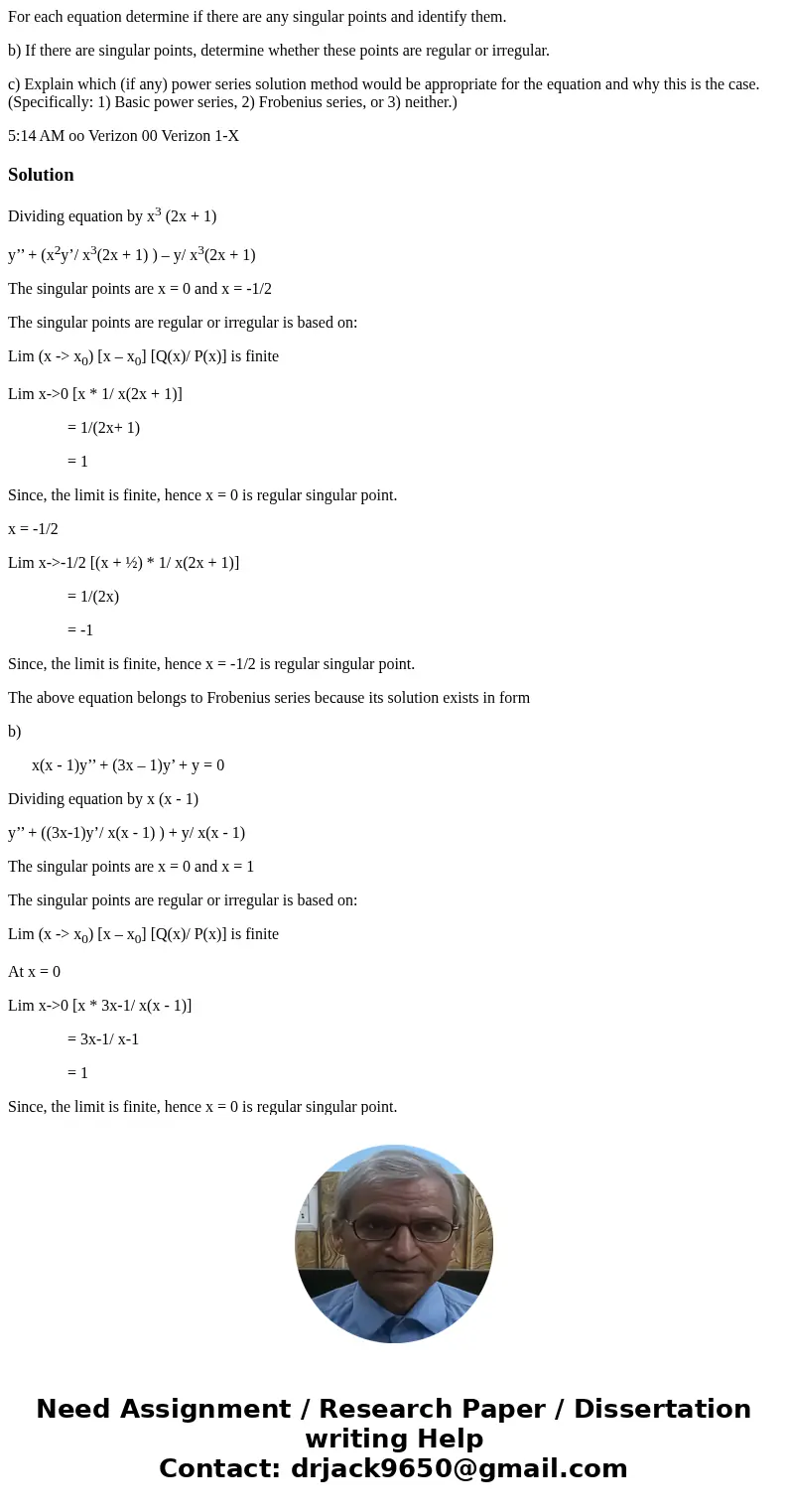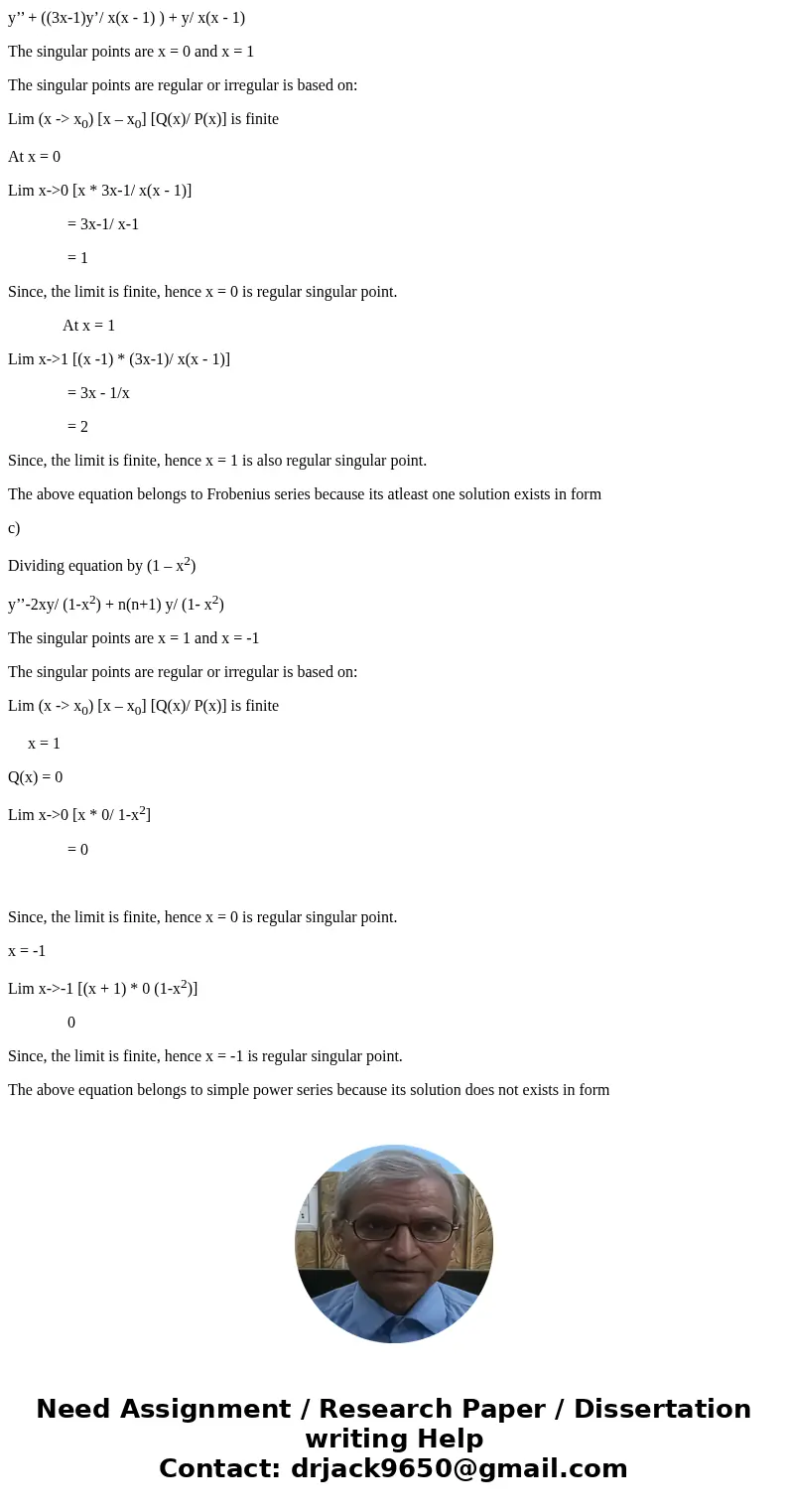For each equation determine if there are any singular points
For each equation determine if there are any singular points and identify them.
b) If there are singular points, determine whether these points are regular or irregular.
c) Explain which (if any) power series solution method would be appropriate for the equation and why this is the case. (Specifically: 1) Basic power series, 2) Frobenius series, or 3) neither.)
5:14 AM oo Verizon 00 Verizon 1-XSolution
Dividing equation by x3 (2x + 1)
y’’ + (x2y’/ x3(2x + 1) ) – y/ x3(2x + 1)
The singular points are x = 0 and x = -1/2
The singular points are regular or irregular is based on:
Lim (x -> x0) [x – x0] [Q(x)/ P(x)] is finite
Lim x->0 [x * 1/ x(2x + 1)]
= 1/(2x+ 1)
= 1
Since, the limit is finite, hence x = 0 is regular singular point.
x = -1/2
Lim x->-1/2 [(x + ½) * 1/ x(2x + 1)]
= 1/(2x)
= -1
Since, the limit is finite, hence x = -1/2 is regular singular point.
The above equation belongs to Frobenius series because its solution exists in form
b)
x(x - 1)y’’ + (3x – 1)y’ + y = 0
Dividing equation by x (x - 1)
y’’ + ((3x-1)y’/ x(x - 1) ) + y/ x(x - 1)
The singular points are x = 0 and x = 1
The singular points are regular or irregular is based on:
Lim (x -> x0) [x – x0] [Q(x)/ P(x)] is finite
At x = 0
Lim x->0 [x * 3x-1/ x(x - 1)]
= 3x-1/ x-1
= 1
Since, the limit is finite, hence x = 0 is regular singular point.
At x = 1
Lim x->1 [(x -1) * (3x-1)/ x(x - 1)]
= 3x - 1/x
= 2
Since, the limit is finite, hence x = 1 is also regular singular point.
The above equation belongs to Frobenius series because its atleast one solution exists in form
c)
Dividing equation by (1 – x2)
y’’-2xy/ (1-x2) + n(n+1) y/ (1- x2)
The singular points are x = 1 and x = -1
The singular points are regular or irregular is based on:
Lim (x -> x0) [x – x0] [Q(x)/ P(x)] is finite
x = 1
Q(x) = 0
Lim x->0 [x * 0/ 1-x2]
= 0
Since, the limit is finite, hence x = 0 is regular singular point.
x = -1
Lim x->-1 [(x + 1) * 0 (1-x2)]
0
Since, the limit is finite, hence x = -1 is regular singular point.
The above equation belongs to simple power series because its solution does not exists in form


 Homework Sourse
Homework Sourse